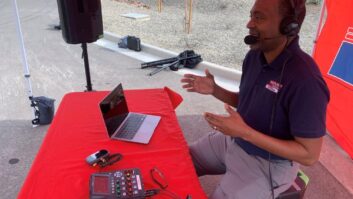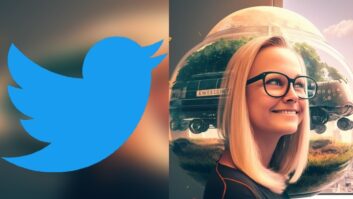Does CBS Radio President/CEO Dan Mason respect Pandora as a competitive threat? Yes. Is he worried that when streaming services penetrate the car dashboard more broadly, they will mean the end of traditional radio? Not in the least.
“Radio is a business that’s been around since 1928, and over the years it has survived a lot of ‘killer apps,’” Mason told Radio World.

“Those killer apps have included television, 8-tracks, cassette tapes, CDs and iPods — and now streaming media. I’m not saying that Pandora won’t have an impact; it will. But when it comes to disasters like the tornados in Alabama, people there will tell you that it was local radio that saved their lives; not Pandora.”
Still the hub
Mason’s been a radio devotee since 1973, when he got his first job doing overnights at WKLO(AM) in Louisville, Ky. Some 38 years later, he still talks about the power of audio.
“When it comes to keeping an audience, it’s all about the content. And all of these new options — Web pages, mobile apps — are simply new venues where we can make our content come to life. Thanks to the Web and wireless, we can now do video and graphics as well as audio. And we can have two-way conversations with our listeners, bringing them closer to us and our brands.
“But these are just enhancements. At the end of the day, it’s the audio we produce that drives everything.”
In this world, broadcasting, streaming and other new media platforms are complementary. A case in point: CBS New York sports station WFAN(AM) has come out with a mobile app aimed at Mets fans. “Using this app, you can talk to any other fans who are at the game with you, anywhere in the stadium,” Mason said. “What they talk about is the content we are broadcasting at the game. So they listen to us and talk about us at the same time.”
CBS itself continues to build its new media and streaming offerings. In June, its Interactive Music Group announced it will give consumers the ability to create personalized online stations with a button in the Radio.com player, applying technology of its Last.fm music discovery and recommendation service — thus playing more aggressively in Pandora’s meadow while continuing to support online simulcasts of its traditional radio stations.
A quote from exec David Goodman suggests how the company in balancing traditional and new media channels: “Premium content from major-market brands like KROQ and WXRT … is in high demand and will continue to foster growth online for many years to come. But in a world where consumers expect more and more control over their audio consumption, we’re pleased to provide them with the best of both worlds.”
As Goodman put it, CBS listeners appreciate local radio stations on-air and online, but also “value the ability to experiment with their own musical tastes.”
Content hub
Yet such online experimentation and personalization is seen by some in radio as a threat. Mason doesn’t talk that way. And given his belief in radio as a content hub and that “local & live” trumps everything else, he is not worried about streaming into listeners’ cars.
“Even today, people have lots of choices to listen to; why, in New York City, there are 100 radio stations; yet the average car radio only has 10 presets, 20 if you’re lucky. So people don’t listen to all 100 stations. Adding more choice to the mix won’t change that.”
Further, Mason cited satellite radio’s relatively low penetration (20 million+ at the end of 2010, according to Sirius XM) compared to broadcast radio. He pointed to Sirius XM’s lack of local content. That’s a differentiator for local radio broadcasting compared to a Pandora as well.
What about the argument that more ad-free streaming to the dashboard will pull more listeners from AM and FM? “People understand that ads are what make radio free to listen to,” Mason replies. “Satellite radio isn’t free. And you have to have a wireless plan to get streaming media. But broadcast radio is there when you turn on your car, and it doesn’t cost you anything to tune in.”
So he isn’t willing to entertain any notion that radio’s day is past. From his perspective, the medium has survived competition from all those “killer apps” and yet is alive and thriving today.
He continues to have hopes for HD Radio, too, though he says the industry is “still in the pioneering stage with it, trying to figure out what works. “We are seeing some success with ancillary sports team channels, such as WOGL’s Phillies 24/7 channel on HD2. But this market won’t take off until there are far more HD radios in use.”
Dan Mason remains an ardent believer in broadcast radio’s role. “Five years from now, the Pandoras of the world will keep on coming,” he concluded. “But as long as there’s a good retail base in the United States that wants to advertise locally, broadcast radio will stay in the game — and keep winning.”
James Careless wrote in April about Emmis Interactive Co-President Rey Mena.












